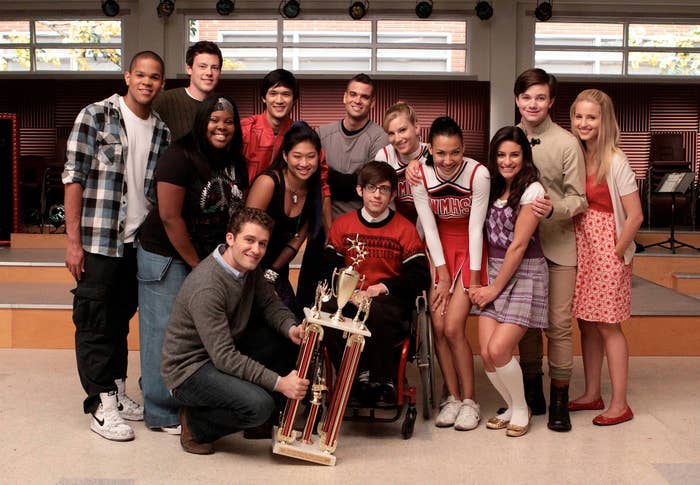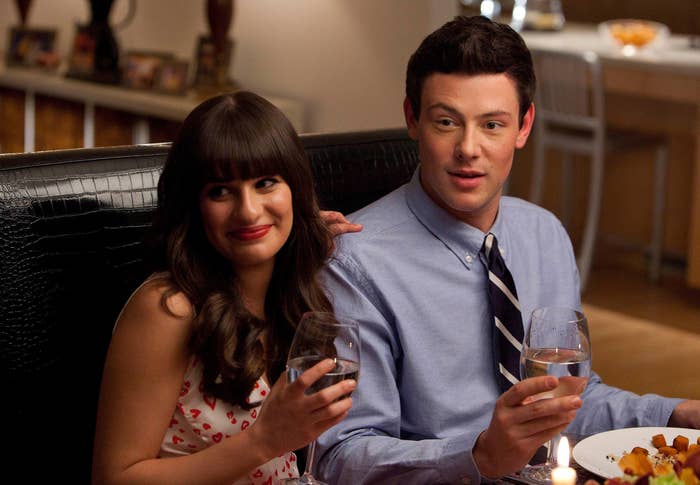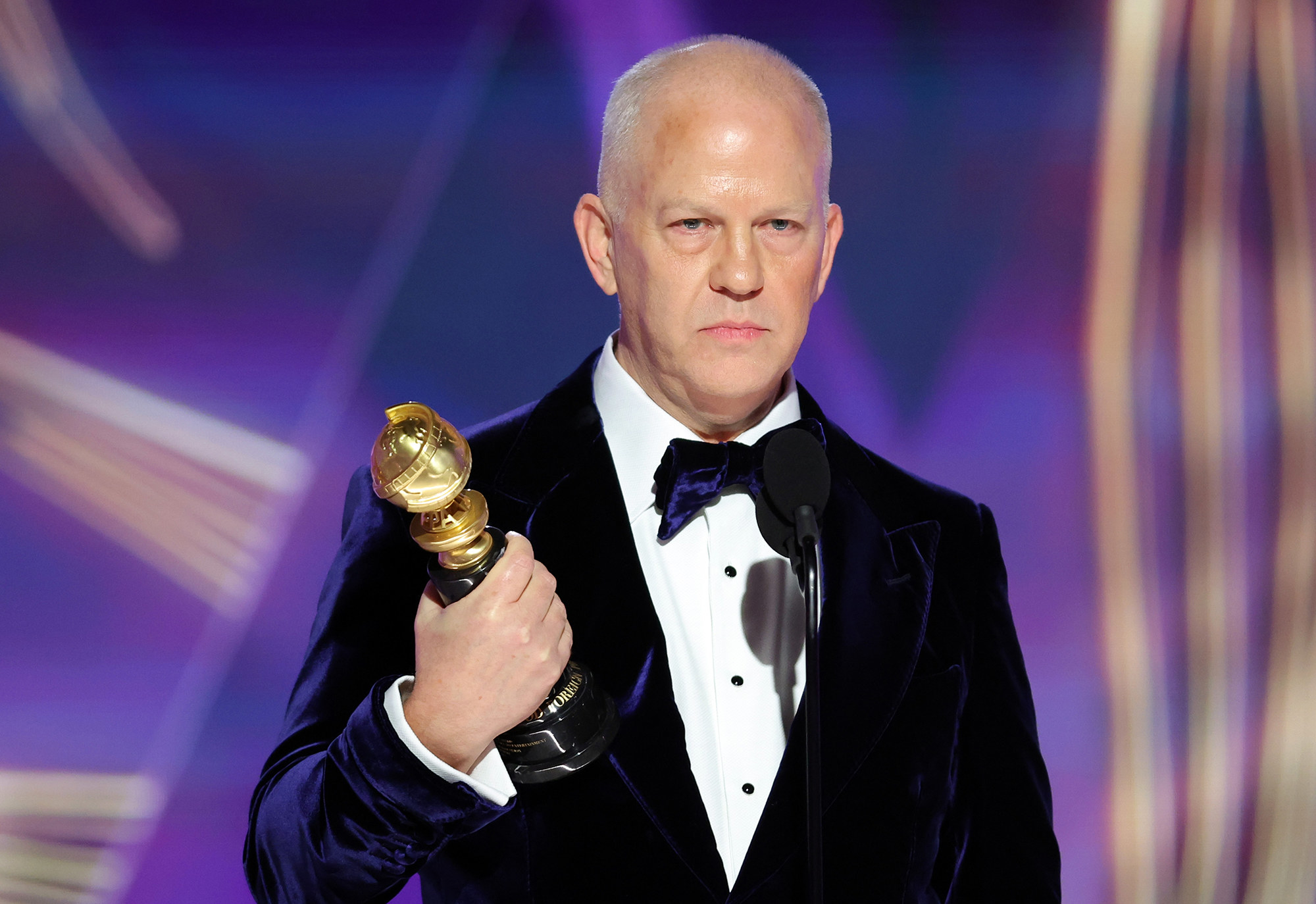
In 2009, a technicolor wonder premiered on Fox. Ryan Murphy’s show about a motley group of high school singers was bright and funny, with familiar archetypes of misfits and popular kids, plus an air of the ridiculous and a touch of the sweet. Fourteen years later we’re still talking about Glee — and about the sprawling cast of Hollywood newbies it launched to a nauseating stratosphere of fame.
A jukebox musical, Glee derived power from the zeitgeist — from replaying pop culture moments (the good: the show’s mashup of “Rumour Has It” and “Someone Like You”; the bad: “What Does the Fox Say”) and also creating them. It raked in 32 Emmy nominations, Oprah interviewed the cast, and the stars went on two national tours, the latter of which culminated in 2012’s Glee: The 3D Concert Movie. The show’s compilation albums were such a hit that in 2012 the Glee cast collectively ranked as the eighth-best-selling digital artist of all time.
For the millions of young millennials who tuned in, Glee marks a clear point in time: a pre-Trump coming of age, an era of vivacity and rapid cultural momentum. The show made huge strides in queer representation on TV. By the show’s end so many characters fell under the LGBTQ umbrella that the few who didn’t were token straight friends. Glee played out gooey teen love stories that had never been gifted to queer audiences before — not that boldly, nor in that quantity.
But the show’s legacy has been complicated. Rocky. Glee epitomized a loud, earnest millennial sensibility that fell out of favor in the later 2010s. The show could be cloying and out of touch. Teacher Will Schuester (Matthew Morrison) sang Coldplay with his students, lamenting that he couldn't “fix” his girlfriend's (Jayma Mayes) mysophobia and OCD. Gwyneth Paltrow, playing a provocative substitute teacher, sang a perplexing version of CeeLo Green’s “Fuck You.” And though the show purported to be satire, that couldn’t save its straight-faced rendition of “Gangnam Style.”
Then there was the behind-the-scenes drama. The show’s cast members were magnets for Hollywood gossip: feuds, bullying, racism, drugs, multiple instances of domestic violence, arrests, and the deaths of cast members Cory Monteith, Naya Rivera, and Mark Salling all made headlines.
It was only a matter of time before someone would attempt a relitigation of the series, give it the E! True Hollywood Story treatment. Glee was so popular, its cultural presence so garish, its celebrity gossip mill evergreen. Someone had to make sense of this messy mythos eventually. Right?
Enter The Price of Glee, a three-part ID and Discovery+ docuseries that premieres today. Produced by Ample Entertainment, most famous for minor series like Queen of Versailles Reigns Again, the limited series attempts to tell viewers the truth behind the show’s controversial offscreen tragedies, colloquially known as the Glee curse. But The Price of Glee is quite literally the true crime-ification of a Twitter joke. A lurid depiction of real-life traumas that are incongruously spliced together, it’s ghoulish, an example of what happens when Hollywood myth-making crosses the line.

Glee gave us a lot to talk about. Whether you were a young fan, an old critic, or a good old-fashioned gossip hound, there was something to feast on for everybody. This was a hit show starring hot young people who lived, loved, fought, and died very publicly. People really love a Hollywood curse. Scandal, after all, is fun. True crime coverage is ubiquitous, and people crave a good, juicy narrative. Curses activate a key thrill for the average culture vulture: the satisfaction that, hey, at least that's not your life.
But “the Glee curse” soon became shorthand for any moment of perceived negativity attached to a former Glee cast member. The phrase popped up again in 2020, when former cast member Samantha Ware, who played Jane Hayward in Season 6, accused Lea Michele of being a racist bully on set — as if Michele’s alleged actions had a supernatural origin. When Matthew Morrison was fired from So You Think You Can Dance last June, at least one newspaper referenced the curse. Some Twitter users invoked the curse to lament the fact that Amber Riley hasn’t become a breakout star and to mock Chris Colfer for keeping a shrine to Queen Elizabeth I.
Those aren’t even the horror stories. Three cast deaths have been highly sensationalized in the media, and in public discussion of Glee's legacy. In 2013, mere weeks before filming was set to start on the show's fifth season, Glee star Cory Monteith died of mixed drug toxicity involving heroin and alcohol. He’d struggled with substance abuse since his early teens. In 2015, Mark Salling was arrested for possession of child sexual abuse images. He pled guilty and died by suicide in 2018, before he was set to be sentenced. Then there’s Naya Rivera. In 2020, Rivera's then-four-year-old son Josey was found alone on a boat. Police mounted a search and found Rivera’s body. She had drowned. Josey told investigators he and his mom had been swimming; she’d helped him onto the boat, but hadn't been able to pull herself to safety. In 2022, Rivera’s ex-husband Ryan Dorsey settled a wrongful death lawsuit with Ventura County.
Those are three very different stories of death — three separate people, in wildly distinct scenarios. The Price of Glee doesn’t care that all that ties these deaths together is that the deceased used to work together.
The series does provides brief but valuable insight into the backbreaking work that goes into shows like Glee — the kind 60,000 members of the International Alliance of Theatrical Stage Employees (IATSE) union authorized a strike over in 2021. Former Glee gaffer J.A. Byerly appears in the docuseries, recalling frequent 70-hour weeks. Byerly’s brother, unnamed in the series, was a fellow crew member who died by suicide at the beginning of Season 6. “It’s something that I blamed on that show,” Byerly says in the docuseries. But this is not a series about ethical labor practices. Instead, The Price of Glee revels in celebrity even as it pretends to lament its costs. The second episode, which highlights several crew members who died during Glee’s run, spends more time talking about Michele’s alleged attitude on set than about the worker conditions the show claims resulted in the crew member deaths. This is a series that cares, above all, about celebrity gossip. By nature of its framing, The Price of Glee places the deaths of three cast members — two of which happened after the show ended — above those of below-the-line workers.

Despite those priorities, the series is notably lacking interviews with creator Ryan Murphy, any other major producers, or any members of the cast. The series features interviews with Glee's former director of photography, hair department head, set decorator, art director, and location manager — roles that, while crucial to the production of a television show, hardly have authority over what happened when the stars went home. The series does include extensive interviews with Rivera's father, George Rivera, as well as three allegedly close friends of Monteith’s: former roommate Justin Neill, actor Stephen Kramer Glickman, and friend from Vancouver Frederic Robinson. But the closest it gets to cast interviews is a former backup dancer and a few stand-ins.
Cast members Chord Overstreet and Becca Tobin have spoken out against the docuseries, expressing doubts that anyone in the core cast would be involved. In a joint interview with BuzzFeed in November 2022, former cast member Jenna Ushkowitz — who cohosts a podcast called And That’s What You REALLY Missed with fellow Glee alum Kevin McHale — expressed her concerns about the documentary: “In terms of the Discovery+ documentary, it feels even more important, to me at least, to do the podcast because we were the ones who were there. And we were the ones experiencing this. And we know what really happened.”
The series’ approach to the misfortunes of the cast is frequently dehumanizing. In The Price of Glee’s first episode, every interview waxes philosophical on the cast’s disorienting launch to notoriety. They talk about Journey and the audition process. These recollections would be benign, boring even — if it weren’t for the surrealist true crime score dun-dun-dunning in the background. “By 2020, all of [this cast] would be famous,” text on the screen tells viewers, “and three would be dead.”
Unlike in Glee itself, these moments of camp offer no hint of irony. A montage of highlighted headlines, tweets, and photos plays as if to illustrate the central thesis that yes, of course this show and its cast are cursed. The montage references former cast member Melissa Benoist’s 2019 accusation of domestic abuse against her ex-husband and former Glee co-star Blake Jenner. (In 2020, Jenner released a statement taking “full responsibility” for the hurt he inflicted on Benoist, “emotionally, mentally and yes, physically.”)
But Glee is not a true crime story. The Price of Glee tries to carve grand mythology from the lives of over a dozen actors who once shared small talk over craft services. Along the way, it often forgets these people are human.
Benoist met a man at work, he became her husband, and he made the choice to hurt her. It doesn’t really make sense to lump domestic abuse charges with the deaths of former co-workers or to to place Rivera’s or Monteith’s names next to that of a man who died during a legal battle over child sexual abuse images. The series’ connections are tenuous at best, voyeuristic and harmful at worst.
Glee was camp: gaudy and a bit of an oddity, amusing and with a confusing relationship to self-awareness. That sensibility has long since shaped how the show is discussed. In the public imagination, tales of what went on behind the scenes at Glee feel like natural extensions of the show’s own fun-house mirror portrayal of the world.
But the cast of Glee were just a group of coworkers. They worked together on a very specific — and specifically intense — TV show. They put in long hours, chatted with gaffers and grips. They fought, they fucked. They faced challenges that most of us can’t relate to (dodging stalking paparazzi) and ones we can (microaggressions from type-A coworkers). Then their job ended. They moved on. Some left the industry. Life happened.
There’s probably a lot that’s interesting about Glee’s alumni — experiences we haven’t heard, hilarities and tragedies not yet unearthed. Key to any narrative, though, is that people are what make a story interesting. The Price of Glee isn’t interested in that. The show mines lazy hot takes from tragedy. It’s a slap in the face to human beings it exploits. And to a lesser extent, it’s also an insult to those who watched at home. Those who take an interest in how people navigate the extraordinary setting of Hollywood.
The stories we tell bear weight. No one — at least not yet — has grasped how best to tell the story of what came from Glee. ●
Alanna Bennett is a screenwriter and culture writer. She's written for The CW, Netflix, and Amazon, as well as BuzzFeed News, The New York Times, New York Magazine, Teen Vogue, Eater, and many more.
